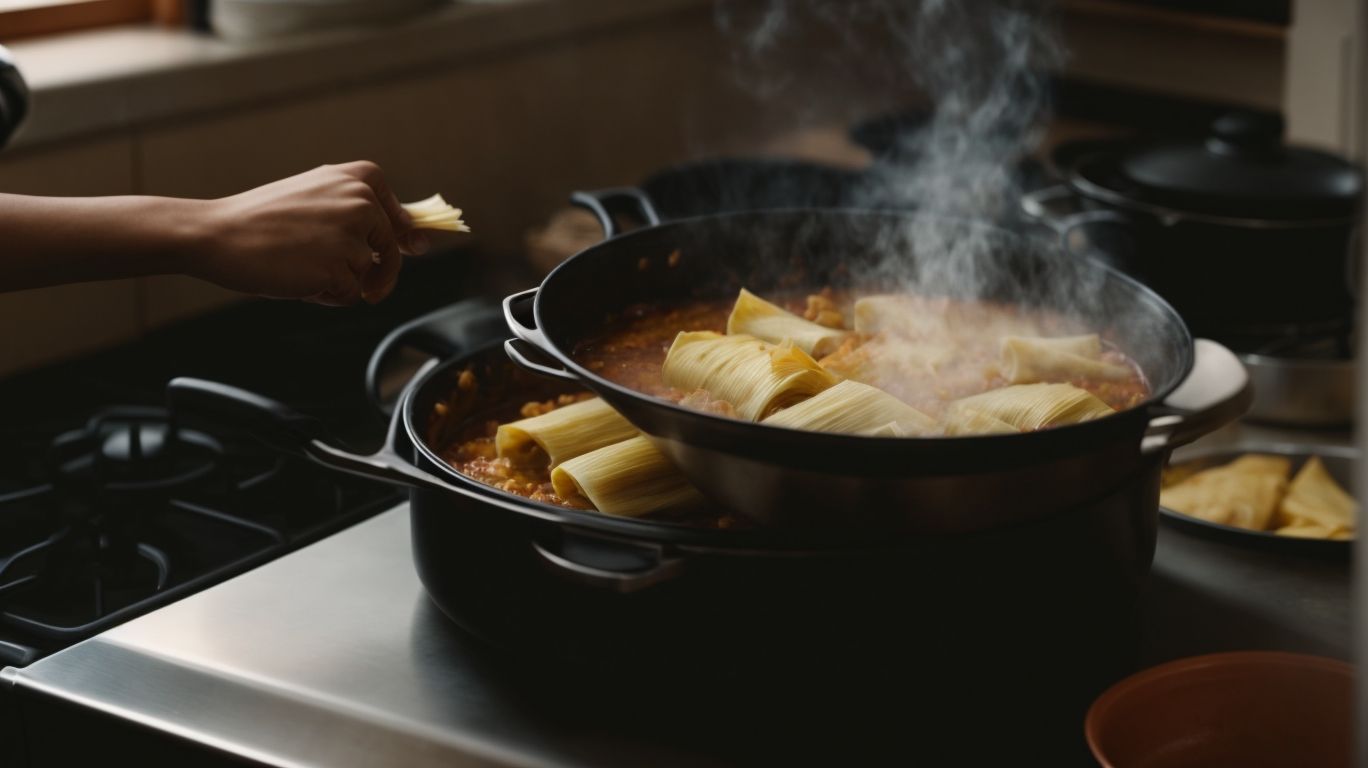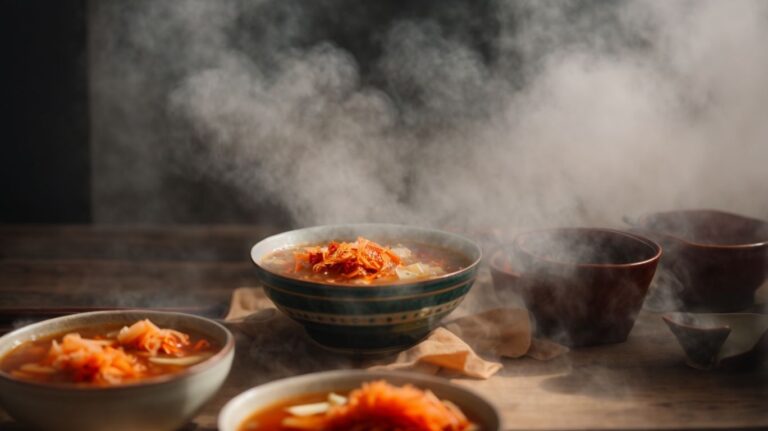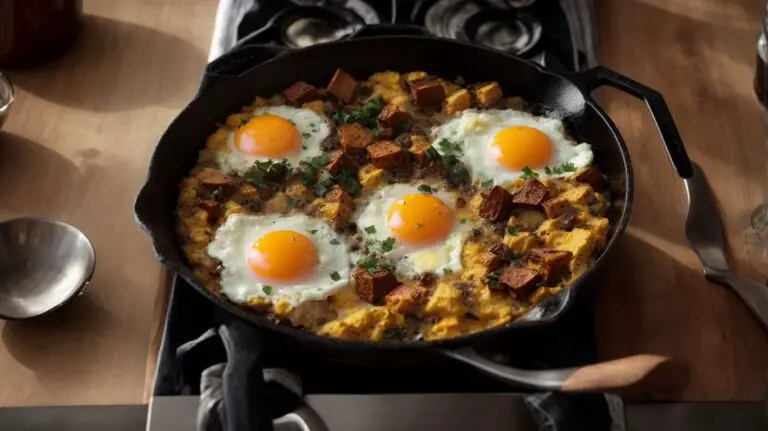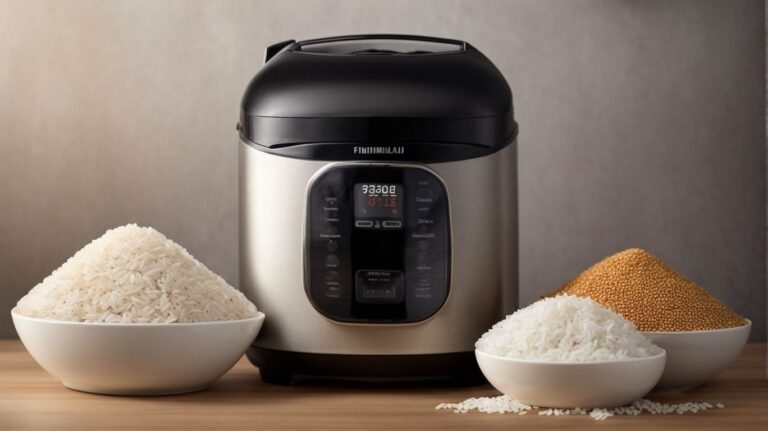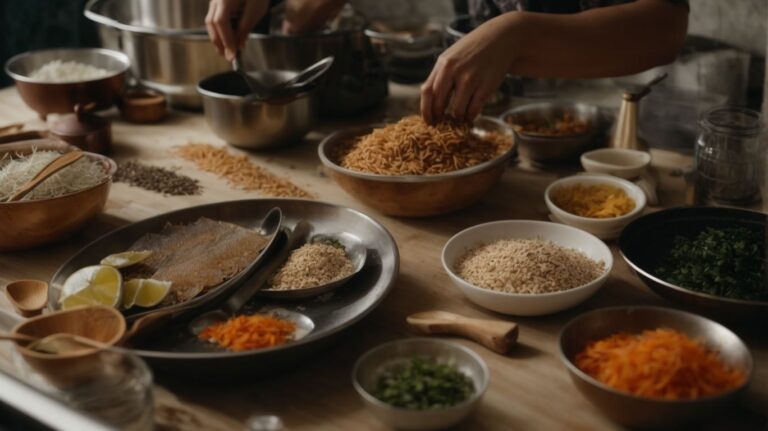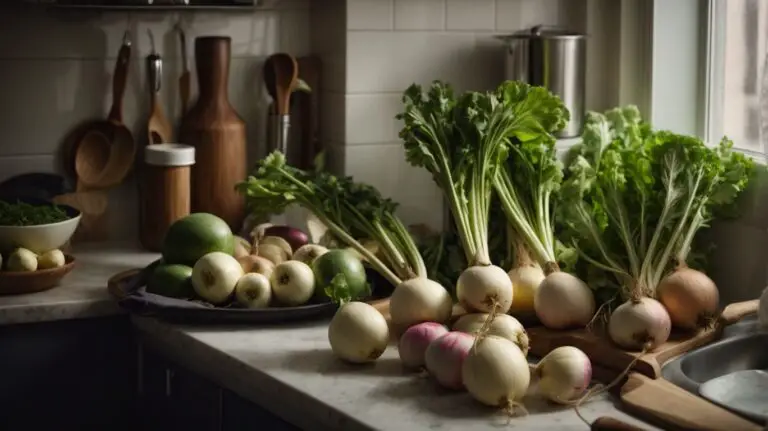How to Cook Tamales Without a Steamer?
Have you ever wondered how to cook delicious tamales without a steamer?
We explore the different types of tamales, why steaming is the preferred method, and how to steam tamales using a steamer.
But what if you don’t have a steamer? Not to worry! We will also discuss alternative methods such as using a pot and a plate, a slow cooker, or even a microwave.
Get ready to impress your friends and family with your culinary skills with expert tips on cooking tamales without a steamer!
Key Takeaways:
What Are Tamales?
Tamales are a traditional Mexican dish made with masa dough, filled with ingredients such as meat, vegetables, and seasonings, wrapped in hydrated corn husks, and steamed to perfection.
The history of tamales dates back to ancient Mesoamerican civilizations, where they were considered a food of the gods. The corn masa used in tamales is a staple in Mexican cuisine, showing the influence of indigenous cooking techniques.
Tamales are often prepared during special occasions and holidays such as Christmas and Day of the Dead, highlighting their cultural significance. The process of making tamales involves spreading masa on corn husks, adding the filling, wrapping them securely, and then steaming them until the masa is cooked through.
What Are the Different Types of Tamales?
There are various types of tamales, including traditional Mexican tamales made with meat, and modern variations catering to meatless diets with vegan and vegetarian Mexican recipes.
Traditional Mexican tamales usually feature fillings such as pork, beef, or chicken, seasoned with a variety of spices like chili powder, cumin, and garlic, wrapped in a corn dough called masa, and steamed in corn husks. These classic tamales have been a staple in Mexican cuisine for generations, offering a burst of flavorful goodness in every bite.
On the other hand, contemporary adaptations of tamales have emerged to accommodate changing dietary preferences, with innovative fillings like black beans, cheese, spinach, and even exotic ingredients like huitlacoche, a corn fungus delicacy. These modern tamales not only cater to vegetarians and vegans but also showcase the versatility and creativity of Mexican culinary traditions.
Why Steam Tamales?
Steaming tamales is a crucial step in the cooking process as it ensures that the masa dough cooks properly, resulting in tamales that are soft, tender, and infused with the flavors of the fillings, maintaining the authenticity of traditional Mexican foods.
What Is a Steamer?
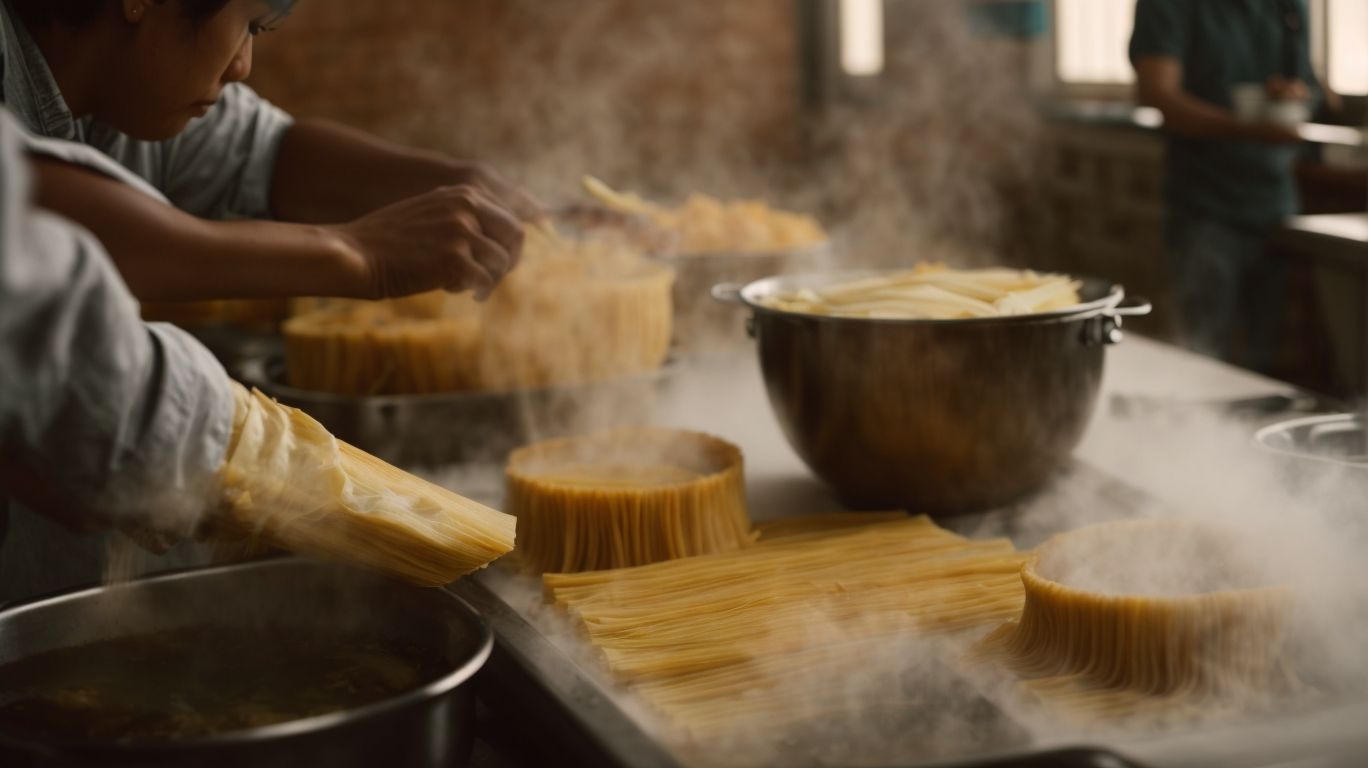
Credits: Poormet.Com – Matthew White
A steamer, whether a traditional tamalera steamer or a modern vegetable steamer, consists of a pot with water, a metal rack for placing the tamales, and a lid to trap the steam, creating the perfect environment for simmering the tamales to perfection.
How to Steam Tamales Using a Steamer?
To steam tamales using a steamer, fill the pot with water up to a certain level, place the tamales on the metal rack ensuring the handle is upright, stack multiple layers if needed, and cover with a lid, allowing the tamales to steam on the side for the designated cooking time.
Step 1: Prepare the Steamer
The first step in steaming tamales is to prepare the steamer by placing a tamalera steamer or a large pot filled with water over high heat, creating the ideal environment for baking the tamales to perfection.
Once the steamer is set up, the water should be brought to a gentle boil, producing the necessary steam to cook the tamales thoroughly. It’s important to monitor the water level throughout the cooking process to prevent it from running dry and ensure consistent steaming. Different steamer types, such as bamboo steamers or electric steamers, can also be used depending on personal preference and availability. The recommended cooking temperature for steaming tamales is typically around 212°F (100°C), maintaining a steady heat for even cooking.
Step 2: Prepare the Tamales
The next step involves preparing the tamales by spreading masa dough on hydrated corn husks, adding the desired ingredients, and wrapping them securely before placing them in the steamer for cooking. For visual guidance, refer to instructional videos.
If you’re new to making tamales, selecting the right fillings is crucial. Traditional options include pork, chicken, beef, or vegetarian variations with ingredients like green chilies, olives, or cheese. The key is to balance flavors and textures to create a delicious filling. Once you have your ingredients ready, carefully spoon and spread the mixture over the masa-coated husk, ensuring an even distribution.
After adding the fillings, it’s time to master the rolling technique. Start by gently folding one side of the husk over the filling, then roll it to the opposite edge, forming a compact cylinder. Tuck the open end underneath to secure the tamale. This step might require practice, so don’t worry if your first few tamales are not perfect. Remember, practice makes perfect!
For a more detailed visual demonstration, consider watching online video tutorials on tamale-making. They can offer valuable tips on shaping, filling, and folding techniques. These resources often provide variations in recipes and creative twists to traditional tamales, allowing you to experiment and personalize your culinary creations.
Step 3: Steam the Tamales
Once the tamales are placed in the steamer, reduce the heat to low, cover with foil to retain moisture, and allow them to steam until cooked. After steaming, let the tamales cool slightly, unwrap them, and serve them warm.
When regulating the heat for steaming, it’s crucial not to let it be too high, as this could lead to burning the tamales. Low heat ensures a slow, gentle cooking process, allowing the flavors to meld beautifully.
Using foil acts as a protective barrier against excessive evaporation, maintaining a moist environment that keeps the tamales succulent. As the tamales steam, the foil locks in the essential steam, infusing the masa and filling with delicious flavors.
After cooking, letting the tamales cool slightly prevents them from being too hot to handle while enhancing the flavors. Unwrapping the tamale exposes the tantalizing aromas, preparing your senses for the taste journey ahead.
To serve the tamales warm, arrange them on a platter with traditional sides like salsa, guacamole, and sour cream, elevating the experience of savoring these delightful Mexican treats.
What If You Don’t Have a Steamer?
If you don’t have a steamer, several alternative methods can be used to steam tamales, such as using a pot, foil, and a plate to create a makeshift steaming setup suitable for cooking large quantities or large batches of tamales.
Method 1: Using a Pot and a Plate
One method involves placing water in a pot, positioning a heat-proof plate above it, arranging the tamales in a round pattern on the plate, and covering to create a makeshift steamer. After cooking, allow the tamales to cool before serving.
When preparing tamales using the pot and plate method, ensure the water level is below the plate to prevent direct contact with the tamales, allowing for gentle steaming. The arrangement of the tamales on the plate is crucial for even cooking; avoid overcrowding to ensure each tamale cooks uniformly.
After cooking, it’s vital to let the tamales cool slightly before serving to allow them to set properly. This cooling process also helps the flavors meld together, enhancing the taste of the tamales.
Method 2: Using a Slow Cooker
Another option is to utilize a slow cooker for steaming tamales, allowing them to cook on low heat for an extended period, ensuring a gentle baking process. Arrange the tamales in rows, cover, and let them simmer to perfection.
Slow cookers are excellent tools for those who prefer a hands-off cooking approach. The low heat setting of a slow cooker ensures that the tamales are cooked slowly and evenly, resulting in tender and flavorful outcomes. By arranging the tamales in rows, you optimize the space within the slow cooker, allowing for efficient cooking. The gentle simmering technique of the slow cooker helps retain the moisture in the tamales, preventing them from drying out during the steaming process. This method is particularly useful for ensuring that your tamales turn out just right, with minimal effort on your part.
Method 3: Using a Microwave
For a quick steaming solution, the microwave can be employed by placing the tamales upright in a microwave-safe container, covering with a lid, ensuring the handle is accessible, and unwrapping carefully once cooked.
In selecting a microwave-safe container, opt for one that provides enough room for the tamales to stand vertically without touching the lid. This positioning allows for even heating throughout the tamales, ensuring they are cooked thoroughly. Remember to consider the handle position of the container, placing the tamales away from it to prevent any interference with the microwave’s performance.
Once the tamales are in the microwave, make sure to use a microwave-safe lid that fits securely on top of the container. This lid helps to trap steam inside, aiding in the cooking process and preventing excess moisture loss. When unwrapping the tamales post-cooking, exercise caution as steam will escape, and the hot masa can cause burns if mishandled.
Tips for Cooking Tamales Without a Steamer
When cooking tamales without a steamer, consider using a metal bowl on a cooling rack placed inside a deep pot, allowing you to stack the tamales vertically, ensuring they remain upright during the steaming process.
Conclusion
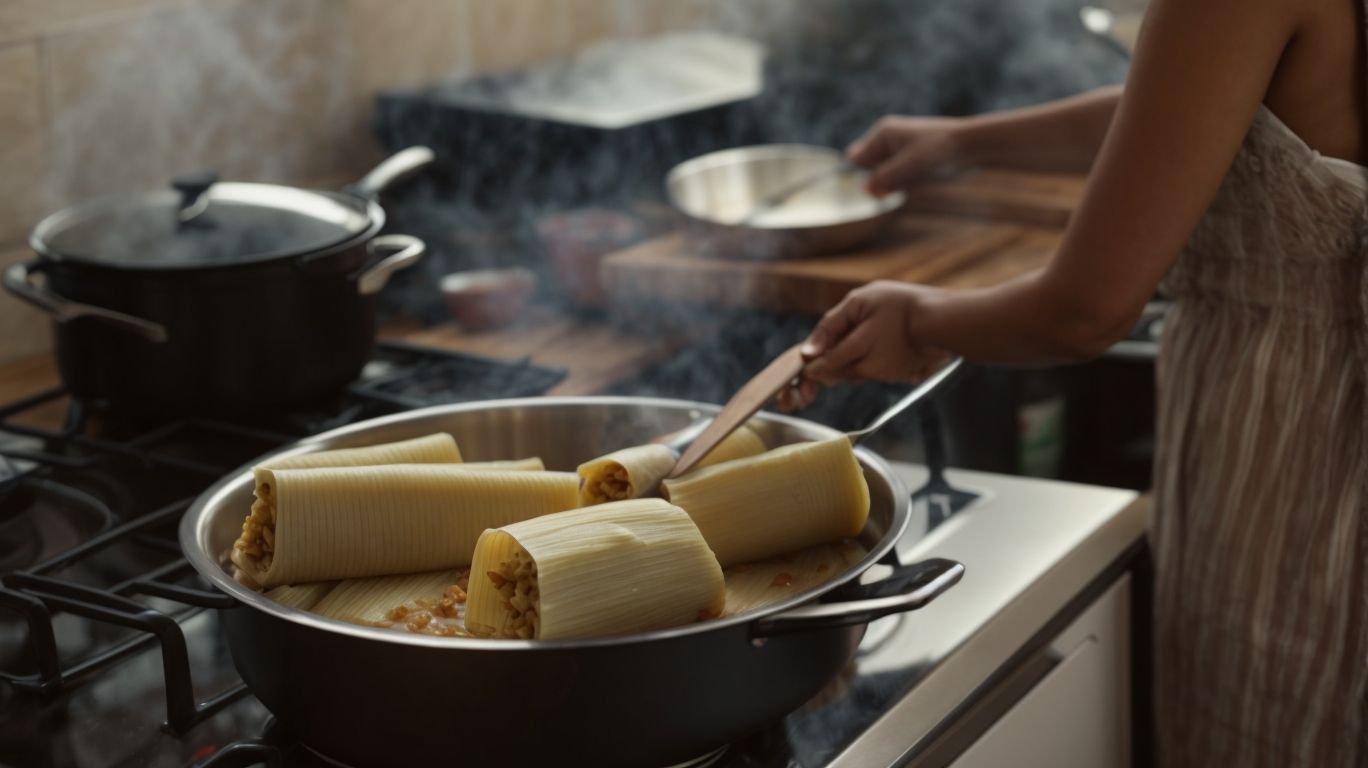
Credits: Poormet.Com – Anthony Rivera
Mastering the art of steaming tamales opens up a world of delicious possibilities, allowing you to serve authentic Mexican flavors with confidence. For detailed instructions and recipe ideas, refer to cookbooks and online resources.
Steaming tamales is not just a cooking technique; it’s a culinary tradition deeply rooted in Mexican culture. The process of encasing flavorful fillings in masa, then steaming them to perfection, results in a taste sensation that captivates the palate. The versatility of tamales is astounding – from savory to sweet fillings, there’s a tamal for every craving.
By diving into Mexican cookbooks or following online tutorials, you’ll uncover a wealth of knowledge on assembling, wrapping, and steaming tamales correctly. These resources offer insights into traditional tamal recipes, regional variations, and innovative twists to keep your culinary creations fresh and exciting.
Frequently Asked Questions
How do I cook tamales without a steamer?
There are a few ways to cook tamales without a steamer, such as using a pressure cooker or a large pot with a makeshift steamer basket. Keep reading for more details on each method.
Can you use a pressure cooker to cook tamales without a steamer?
Yes, using a pressure cooker is a great way to cook tamales without a steamer. You can either use a traditional stovetop pressure cooker or an electric pressure cooker, both will yield delicious results.
How can I make a makeshift steamer basket to cook tamales?
If you don’t have a steamer basket, you can easily make one using a few aluminum foil balls or a wire cooling rack placed inside a large pot. Just make sure the tamales are not touching the bottom of the pot and have enough space to steam.
Can I cook tamales in the oven without a steamer?
Yes, you can cook tamales in the oven without a steamer. Simply wrap them in foil and place them on a baking sheet. Bake at 375°F for about 30 minutes or until heated through.
How long does it take to cook tamales without a steamer?
The cooking time will vary depending on the method you choose, but it typically takes around 30 minutes to cook tamales without a steamer. Be sure to check for doneness by inserting a toothpick into the center of a tamale, it should come out clean.
Is there any difference in taste when cooking tamales without a steamer?
When cooked properly, tamales made without a steamer should have the same delicious taste and texture as those made with a steamer. The key is to make sure they are cooked through and not dry, so be sure to check for doneness before serving.

